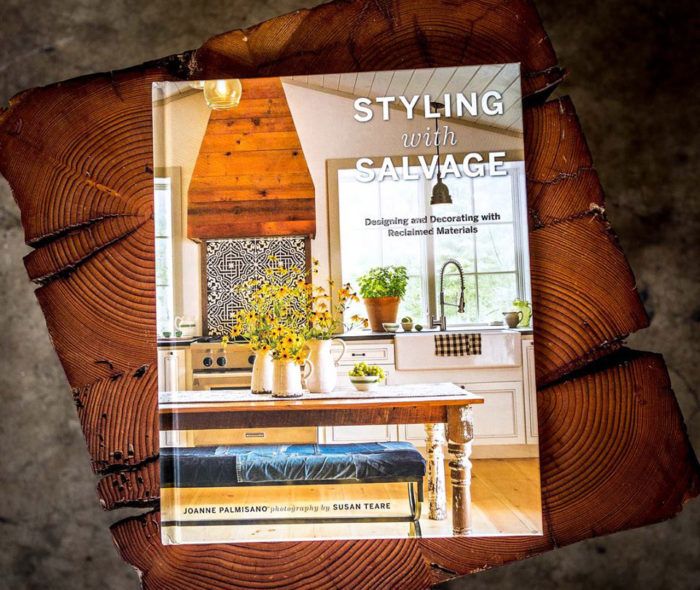Salvage Solutions
Reclaimed materials play an increasingly visible role in residential architecture and interior design.

“Junkyard architecture” is an apt phrase to describe the practice of incorporating salvaged materials into building projects. For the last decade or so, it has proved an enduring trend. More and more architects, builders, and designers are reusing or repurposing existing materials for renovation, restoration, and interior design jobs—and to great effect. By doing so they are erecting and furnishing homes with lower environmental impact and distinct character. Using reclaimed materials is an increasingly viable means of lowering a project’s carbon footprint and embodied energy—defined as the energy consumed by all of the processes associated with the production of a building. By reusing existing buildings, systems, and materials, design teams are also diverting useful products away from landfills. And that’s all good stuff.
In addition to the environmental benefits of reclaimed materials, there are endless artful possibilities. Designers willing to embrace the distress marks, uneven edges, patinas, signs of age, and other imperfections inherent in such materials tend to find themselves helming projects remarkable for their ingenuity, innovation, and green seal.
Reclaimed timber, stone, and brick are perhaps the most commonly known examples of salvaged materials. Framing, decking, countertops, and accent doors are familiar applications. But the industry is expanding to include all manner of salvage—from sidewalks to billboard vinyl to railroad ties. There are now recycled rubber roof tiles, newspaper is finding its way inside wall paneling for insulation. Crushed wine bottles and poured resin can be used to make terrazzo-like vanities. Old pipe fittings are being repurposed as grab rails and towel bars. Period lighting fixtures are culled from salvage yards. Wine barrels and olive-curing tanks are morphing into fine woodwork. The list goes on.
Designer Joanne Palmisano has extensive experience designing with reclaimed goods. In her new book, Styling with Salvage, she showcases seemingly endless ideas for upcycling refuse.

The homeowners used a hand-carved door found at Old World Antieks in La Grange, Tx., in combination with a wrought-iron gate and antique light pendant from Round Top Antique Shows.

With its patina intact, this functioning well-sealed barn door is a conversation-inducing focal point.

Everything in this kitchen was sourced from either a private seller or a local rebuild/recycling center. Palmisano says, “Renovating is not just about adding unique features to a space and bringing it back to life, it’s also about allowing the old materials to be reused by someone else. . . The dumpster should be your last resort.”

Concrete and recycled glass fragments combine for a countertop rich in character.

Incorporating salvage is an excellent idea when renovating on a budget. Here, the homeowners used a sink and shelf brackets from Second Use in Seattle.
Photos by Susan Teare courtesy of Styling with Salvage by Joanne Palmisano (Countryman Press)
Sources of the reclaimed building materials include demolished houses, barns, and outbuildings; decommissioned buildings, schools, railroads, and shipyards; crates, pallets, and miscellaneous furnishings—to name a few. Here are a few reputable companies that carry salvaged products:
- antique-building-materials.com
- portlandsalvage.com
- rebuildingcenter.org
- pioneermillworks.com
- terramai.com
- salvageworkspdx.com
Expert Advice for Building with Reclaimed Wood

For reclaimed lumber, Randy Smith, owner of Ohio Barn Salvage, advises designers/builders to avoid false claims of origin by purchasing from a reputable dealer with certifications from organizations such as the Forest Stewardship Council (FSC) or Rainforest Alliance. He also suggests working with companies that have been in business for a least five years and have received professional reviews declaring them a trusted source.
Kiln drying reclaimed timber is key, according to Smith, who recommends 6% moisture content. Most barn wood removed directly from barns has 14% moisture content. Kiln drying also kills most of the insects that might be trapped in salvaged materials but be sure they have been inspected for infestations.
Smith notes, too, that solid reclaimed wood needs to be handled with a little more care than new common lumber. “The wood is over 100 years old, so you will find tighter grain and more knots, which is what makes it so desirable.” He recommends cutting around knots and highlighting darker veins when installing boards.
Being flexible and creative is important too, he says. “When material is coming in from barns it can be a different species of wood; it might also be coming from opposite sides of the barn, which means changes in shades of color.”
One of the biggest challenges, Smith says, is in buying enough product to complete a project. He recommends buying 15% more than you think you will need for the area to be covered.
Be aware that some lumber will have been treated with paints or sealants, which can contain volatile organic compounds (VOCs), adhesives, preservatives, insecticides, and/or lead. It’s best practice to test timber for toxins to determine possible adverse effects on human health.
Fine Homebuilding Recommended Products
Fine Homebuilding receives a commission for items purchased through links on this site, including Amazon Associates and other affiliate advertising programs.

Graphic Guide to Frame Construction

All New Bathroom Ideas that Work

All New Kitchen Ideas that Work






























View Comments
I really like your post.